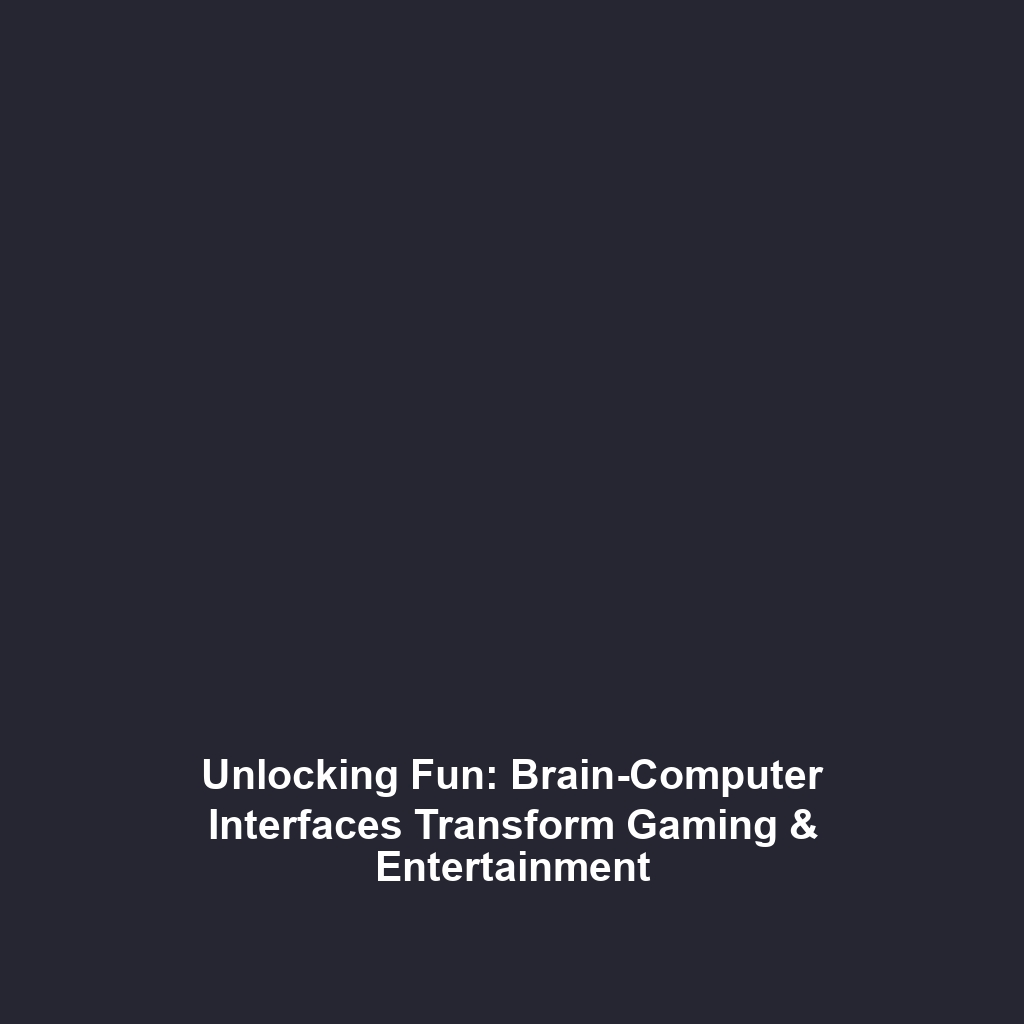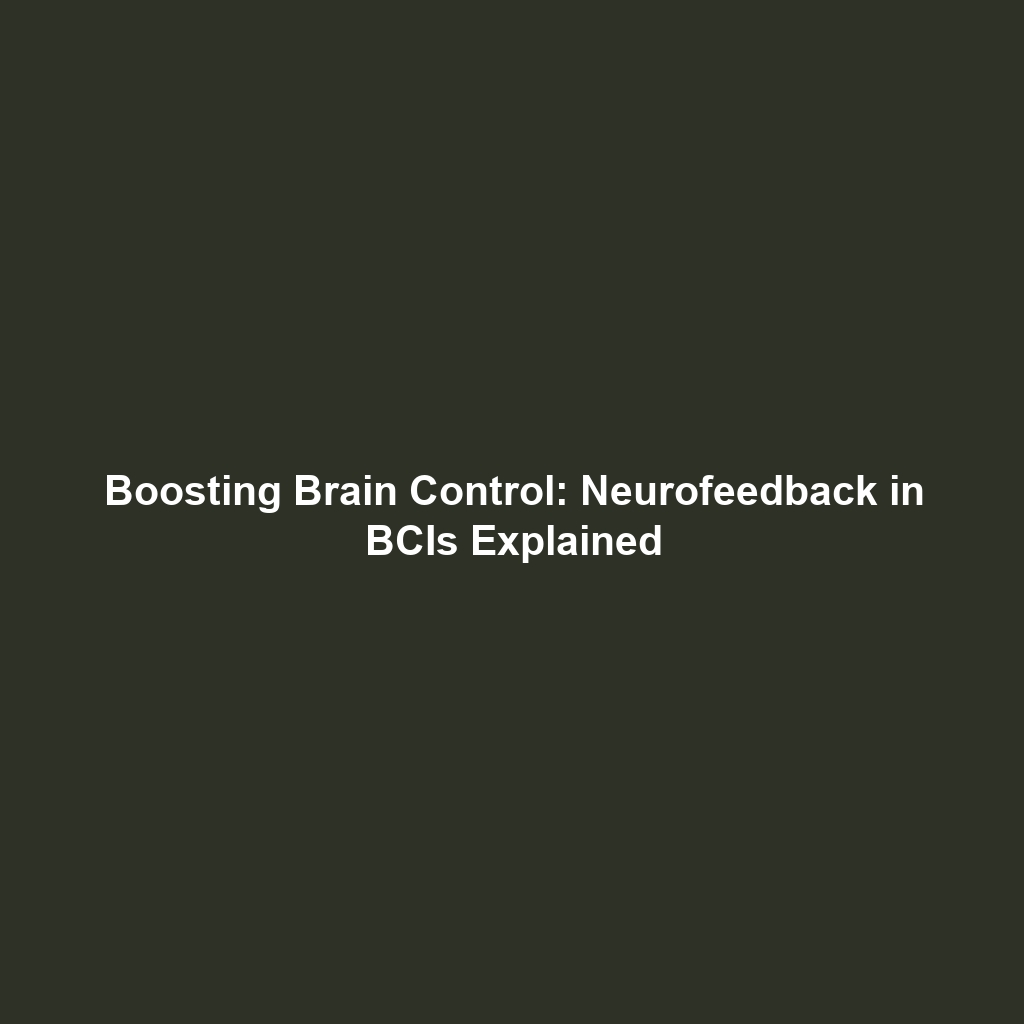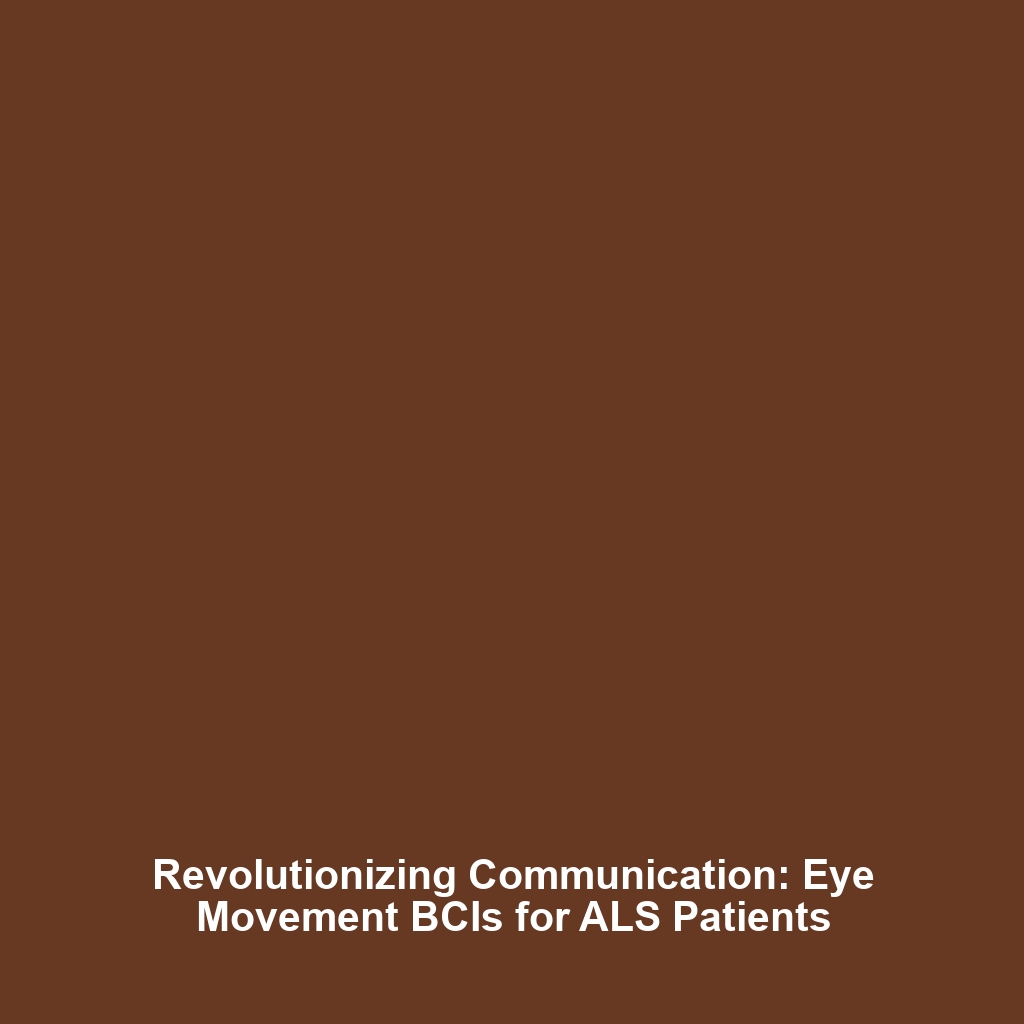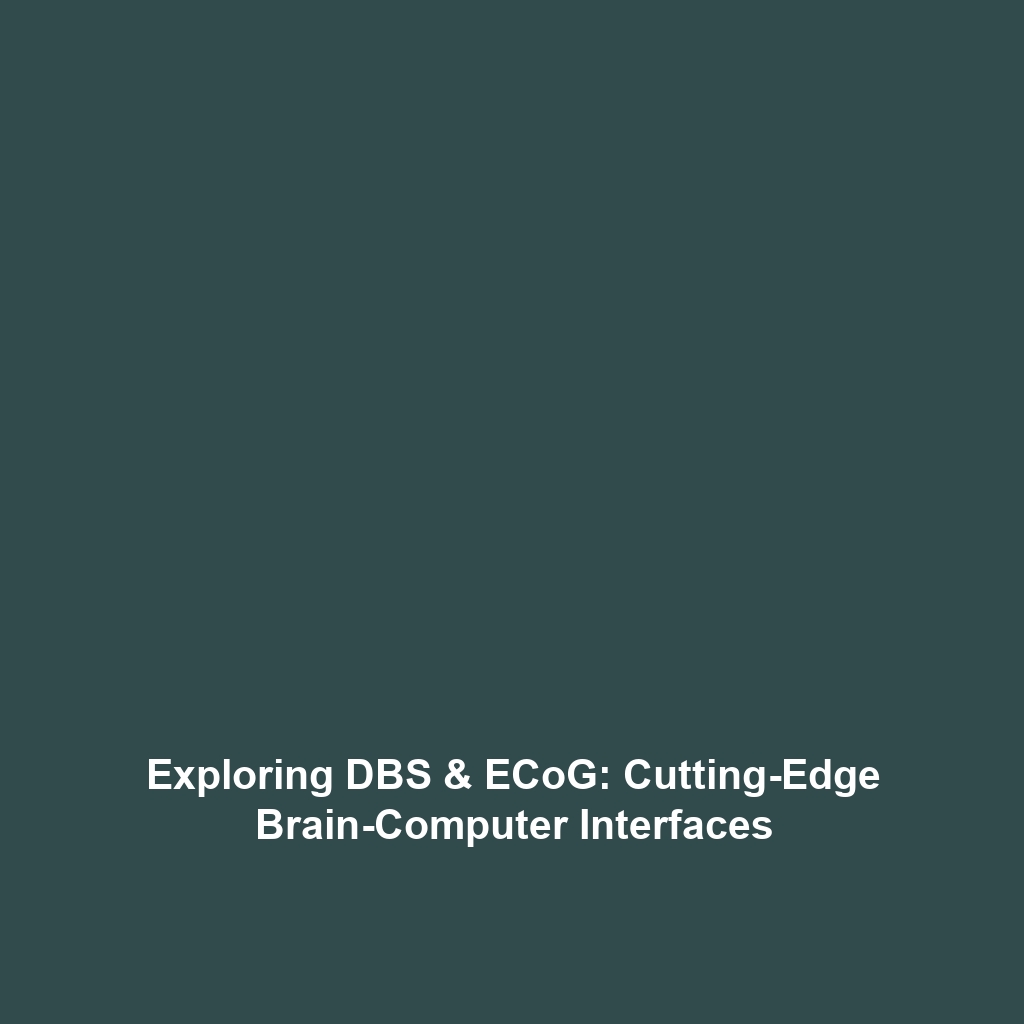Future Goals: Neuralink’s Vision for Advancements in Brain-Computer Interfaces
Brain-Computer Interfaces (BCIs) represent one of the most revolutionary realms of technology today, merging neuroscience with engineering to create systems that allow direct communication between the brain and external devices. Among the frontrunners in this innovative field is Neuralink, a neurotechnology company founded by Elon Musk. Neuralink’s pivotal goals aim to enhance BCI technology for diverse applications, including controlling prosthetics, treating brain injuries, and eventually facilitating brain-to-brain communication. Understanding these ambitions is crucial as BCIs evolve and garner increasing attention for their potential societal impact.
Key Concepts of Neuralink and BCI Technology
At the heart of Neuralink’s objectives lie several core concepts that define the future of Brain-Computer Interfaces:
- Neural Interfaces: Devices that connect the brain to computers or external machinery, allowing for bidirectional communication.
- Neuroprosthetics: Advanced prosthetic devices controlled directly by brain activity, enabling users to regain lost functionality.
- Brain-to-Brain Communication: The ambitious goal of facilitating communication directly between two brains without the need for spoken language or traditional interfaces.
These principles position Neuralink at the forefront of BCI technology, with aspirations to revolutionize interaction not only between humans and machines but also among humans themselves.
Applications and Real-World Uses of Neuralink
As Neuralink pursues its objectives, the practical applications of its BCI technology remain a focal point of interest:
- Prosthetic Control: Neuralink aims to develop prosthetic limbs that can be operated by thought, enabling seamless integration with the user’s neural signals.
- Treatment of Neurological Conditions: The technology could facilitate new therapies for conditions such as Parkinson’s disease, epilepsy, and traumatic brain injuries.
- Enhancing Communication: Brain-to-brain communication could take social interaction to new heights, enabling a level of understanding previously thought impossible.
These applications illustrate how Neuralink’s advancements could redefine the functionality of Brain-Computer Interfaces in real-world scenarios.
Current Challenges in BCI Technology
While the potential of Neuralink’s technology is vast, several challenges persist in the pursuit of its goals:
- Ethical Concerns: The implications of brain data privacy and the potential for misuse of such intimate information raise significant ethical questions.
- Technical Limitations: Developing implants that can safely and effectively communicate with neural tissue without causing harm remains a significant hurdle.
- Public Acceptance: Gaining widespread acceptance and understanding of BCI technology among the public is crucial for its success.
These challenges underscore the complexities involved in advancing Neuralink’s mission within the broader Brain-Computer Interfaces landscape.
Future Research and Innovations
Looking ahead, several innovations are anticipated in the realm of Neuralink and BCI technologies:
- Wireless Communication: Future research aims to develop wireless neural interfaces that reduce risks associated with implanted devices.
- Advanced AI Integration: Leveraging artificial intelligence to improve the interpretation of neural signals for enhanced user experience.
- Next-Gen Neurosurgery: Innovations in minimally invasive surgical techniques may expedite the implantation process and enhance safety.
These breakthroughs could substantially alter the landscape of Brain-Computer Interfaces and reinforce Neuralink’s leading position in the field.
Conclusion
Neuralink’s ambitions within the realm of Brain-Computer Interfaces highlight a transformative potential that extends from aiding individuals with disabilities to enabling unprecedented communication capabilities. As research progresses and challenges are addressed, the future of BCI technology stands on the brink of a revolution. For those interested in the developments within this exciting sector, exploring further resources on breakthroughs in neurotechnology and their implications can provide valuable insights.
Learn more about the future of Brain-Computer Interfaces here.







